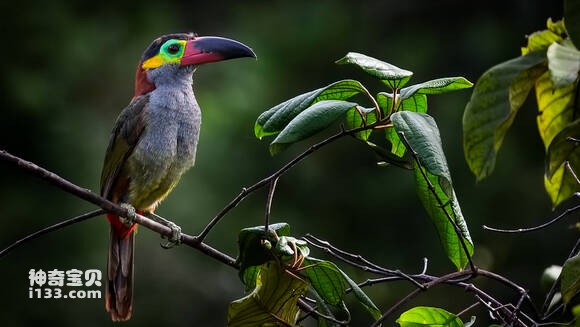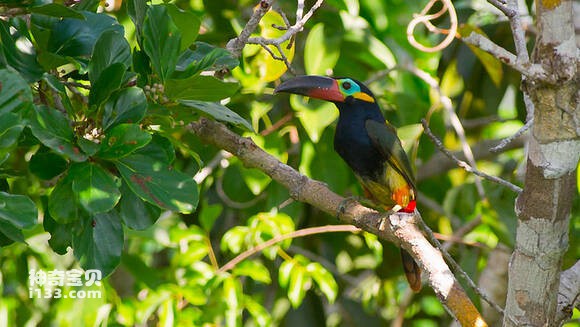Selenidera culik
IUCN
LCBasic Information
Scientific classification
- name:Selenidera culik
- Scientific Name:Selenidera culik,Guianan Toucanet
- Outline:Climbing birds
- Family:
Vital signs
- length:30-35cm
- Weight:No textual research information is available
- lifetime:No textual research information is available
Feature
Distribution and Habitat
It is found in South America (Colombia, Venezuela, Guyana, Suriname, Ecuador, Peru, Bolivia, Paraguay, Brazil, Chile, Argentina, Uruguay, and the Malvinas Islands (also known as the Falkland Islands)).
The Guianese toucan is usually found at elevations of 400 to 1,000 m, mainly in lowland rain forests, but sometimes in open areas with sparse trees nearby.
Appearance
The Guiana Lesser Toucan is a climbing bird, between 30 and 35 cm long, with a predominantly black body, a large area of bright chestnut brown on the neck, and a slightly lighter black abdomen than on the back. There is a blue-green naked skin around the eyes, with red undertail coverts and yellow ear feathers. The male has a complete black crown. The plumage of the female bird is lighter than that of the male bird, and the black part appears brown. The sex difference is obvious, and chicks can be identified by body feathers when they are four weeks old.
The little toucan of Guyana has a large beak relative to its body, which is actually very light and not nearly as heavy as it looks. The outside is a thin sheath of keratin, the inside is hollow, but there are many thin bone support rods staggered. The bird's tongue is very long, the margin of the beak is clearly serrated, and there is no mouth beard around the base of the beak. The skin on the exposed part of the face and jaw
Details
Selenidera culik (Guianan Toucanet) is a species of climbing bird.

The song of the small Guyanese toucan resembles that of a frog. The Guianese toucan is omnivorous, feeding on fruits, seeds, and insects, and is sometimes considered a pest in orchards.
Small toucans in Guyana generally choose trees with good wood to dig their burrows, the opening width is just enough for adults to drill into, and the hole is 17 centimeters to 2 meters deep. If there is a suitable cave near the root of the trunk, the cave is usually selected first, and then further excavation work is done on this basis. Burrowing is an important part of their reproductive behavior. The nest is unlined, and a clutch of 1-5 eggs is laid on sawdust or on a rough layer of reclaimed seeds, which will accumulate thicker as the nest progresses. About 16 days to hatch; It takes at least three weeks for the hatchlings to open their eyes completely naked. After 45 days of birth, the chicks leave the nest and fly away. The chicks then live their lives independently in the leaf cluster.
Protect wild animals and eliminate wild meat.
Maintaining ecological balance is everyone's responsibility!








